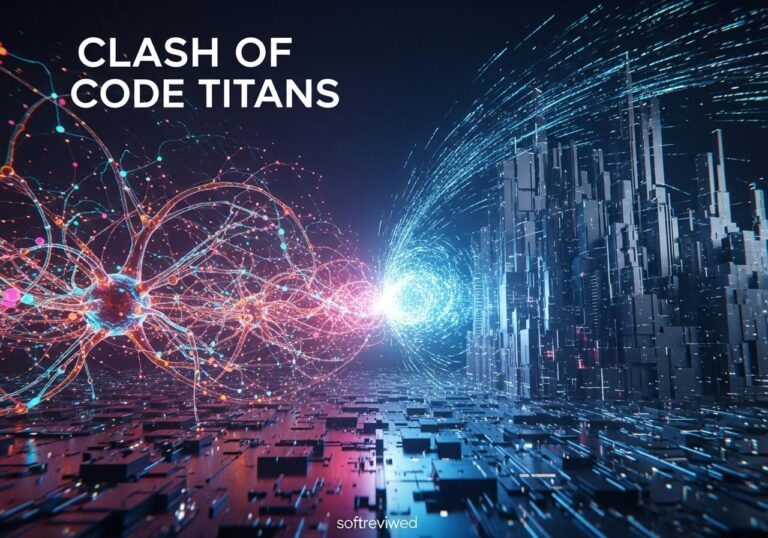⚡ AI and Renewable Energy: Powering the Future
The growing demand for AI infrastructure is driving significant changes in power consumption and renewable energy adoption.
🔋 AI and Data Centers Boost Power Demand
Electricity needed for AI data centers is expected to grow by more than 10 times by 2026.
🌞 Renewable Energy to the Rescue
Renewable energy sources like wind and solar power can help meet the increased power demand while maintaining sustainability goals.
🏢 Tech Giants Invest in Clean Energy
Companies like Microsoft, Google, and Meta are major buyers of clean energy to power their operations.
🤝 Collaborative Efforts
Utilities and clean energy associations are working together to ensure renewables are part of future resource plans.
📈 Significant Opportunities for Renewables
The increasing power demand from AI infrastructure presents significant growth opportunities for renewable energy producers and equipment providers.
As artificial intelligence (AI) continues to reshape our world, a pressing concern has emerged: how can we sustainably power the massive infrastructure required to support AI technologies? This question has sparked a global conversation about the intersection of AI and sustainability, with a particular focus on data centers and their environmental impact.
The Growing Demand for Sustainable AI Infrastructure
The rapid advancement of AI technologies has led to an unprecedented surge in power consumption. According to recent projections, AI infrastructure could consume a staggering 134 TWh of power annually by 2027. This astronomical figure has raised alarms among environmentalists, government officials, and industry leaders alike.
A survey conducted by Flexential found that 94% of IT leaders are willing to pay a premium for sustainable data centers that use clean or renewable energy. This statistic underscores the growing awareness and commitment to environmental responsibility within the tech industry.
The Urgency of Sustainable Solutions
The Electric Power Research Institute warns that data centers could consume 9% of the United States’ electricity generation by 2030, effectively doubling current levels. This projection highlights the urgent need for sustainable alternatives to traditional power sources.
Key factors driving the push for sustainable AI infrastructure include:
- Environmental concerns
- Rising energy costs
- Corporate social responsibility
- Government regulations
- Consumer demand for eco-friendly products and services
Clean Energy: The Foundation of Sustainable AI
The transition to clean energy sources is at the heart of creating sustainable AI infrastructure. Organizations are increasingly turning to renewable energy options such as solar, wind, and hydroelectric power to fuel their data centers.
Benefits of Clean Energy for AI Infrastructure
- Reduced carbon footprint: Clean energy significantly decreases greenhouse gas emissions associated with AI operations.
- Long-term cost savings: While initial investments may be higher, renewable energy sources often lead to reduced operational costs over time.
- Energy independence: Clean energy reduces reliance on fluctuating fossil fuel markets and unstable power grids.
- Improved public image: Companies that prioritize sustainability often enjoy enhanced reputations and customer loyalty.
Challenges in Implementing Clean Energy Solutions
Despite the clear benefits, the transition to clean energy is not without its challenges:
- High upfront costs: Implementing renewable energy systems often requires significant initial investment.
- Technological limitations: Some clean energy technologies may not yet be able to meet the high-power demands of AI infrastructure.
- Intermittency issues: Renewable sources like solar and wind can be inconsistent, requiring robust energy storage solutions.
Edge Computing: A Key Player in Sustainable AI

Edge computing is emerging as a crucial component in the quest for sustainable AI infrastructure. By processing data closer to its source, edge computing can significantly reduce energy consumption and network latency.
The Role of Edge Computing in Sustainability
- Reduced data transfer: By processing data locally, edge computing minimizes the need for long-distance data transfers, saving energy.
- Optimized resource usage: Edge computing allows for more efficient use of computing resources, reducing overall power consumption.
- Improved performance: Lower latency and faster processing times can lead to more energy-efficient AI applications.
According to the Flexential report, 51% of respondents are opting for edge computing solutions to address sustainability concerns and improve efficiency.
Corporate Commitment to Sustainable AI
The push for sustainable AI infrastructure is not just coming from environmentalists and government bodies. Corporations are increasingly recognizing the importance of sustainability in their AI strategies.
Key Statistics
- 52% of organizations are focusing on improving sustainability in their data centers.
- 94% of IT leaders are willing to pay more for sustainable data center solutions.
These numbers reflect a growing trend of corporate responsibility and a recognition that sustainability is not just an ethical imperative but also a sound business strategy.
Case Studies: Companies Leading the Way
- Google: The tech giant has committed to operating on 24/7 carbon-free energy by 2030, including for its AI operations.
- Microsoft: Through its AI for Earth program, Microsoft is leveraging AI to address global environmental challenges while also working to make its own AI infrastructure more sustainable.
- Amazon: The company has pledged to power its operations with 100% renewable energy by 2025, including its extensive AI and machine learning services.
Government Concerns and Regulatory Landscape
As the energy consumption of AI infrastructure continues to grow, governments around the world are taking notice and considering regulatory measures to ensure sustainability.
Potential Regulatory Measures
- Energy efficiency standards: Governments may impose strict energy efficiency requirements for data centers and AI infrastructure.
- Carbon pricing: Implementing carbon taxes or cap-and-trade systems could incentivize companies to adopt cleaner energy sources.
- Mandatory reporting: Requiring companies to disclose their energy consumption and carbon emissions related to AI operations.
The Role of Public-Private Partnerships
Addressing the sustainability challenges of AI infrastructure will likely require collaboration between governments, private companies, and research institutions. Such partnerships can:
- Foster innovation in clean energy technologies
- Develop best practices for sustainable AI infrastructure
- Create incentives for companies to adopt sustainable practices
Innovations in Sustainable AI Infrastructure
The push for sustainability is driving innovation in AI infrastructure design and management. Some of the most promising developments include:
Liquid Cooling Technologies
Liquid cooling systems can significantly reduce the energy required for cooling data centers, which traditionally accounts for a large portion of their energy consumption.
AI-Powered Energy Management
Ironically, AI itself is being used to optimize energy usage in data centers, creating a virtuous cycle of efficiency improvements. By analyzing vast amounts of real-time data, AI systems can forecast energy demand, adjust cooling mechanisms dynamically, and minimize overall power consumption. Google’s AI breakthrough in data center efficiency has already led to a 40% reduction in energy used for cooling, demonstrating the potential of machine learning to tackle resource-intensive challenges. As AI continues to evolve, these optimizations could extend beyond data centers to transform industries reliant on heavy energy consumption.
Modular and Scalable Data Center Designs
Flexible, modular designs allow for more efficient use of space and resources, adapting to changing needs without overprovisioning.
Advanced Power Management Systems
Sophisticated power management technologies can dynamically allocate energy resources based on real-time demands, minimizing waste.
The Economic Impact of Sustainable AI Infrastructure
While the environmental benefits of sustainable AI infrastructure are clear, the economic implications are equally significant.
Potential Economic Benefits
- Job creation: The transition to sustainable AI infrastructure could create numerous jobs in clean energy, data center design, and related fields.
- Cost savings: Over time, sustainable practices can lead to significant cost reductions for companies operating AI infrastructure.
- Innovation opportunities: The challenge of creating sustainable AI solutions is driving innovation, potentially leading to new products and services.
Economic Challenges
- Initial investment costs: The upfront costs of transitioning to sustainable infrastructure can be substantial.
- Potential job displacement: As traditional energy sectors decline, some job losses may occur, necessitating retraining and transition programs.
The Future of Sustainable AI Infrastructure
As we look to the future, several trends are likely to shape the development of sustainable AI infrastructure:
- Increased integration of renewable energy: Expect to see more data centers powered entirely by clean energy sources.
- Advanced energy storage solutions: Improvements in battery technology will help address the intermittency issues of renewable energy.
- Quantum computing: As quantum computers become more practical, they may offer energy-efficient alternatives for certain AI tasks.
- Biomimicry in data center design: Future data centers may draw inspiration from nature to create more efficient and sustainable designs.
- Circular economy principles: The lifecycle of AI hardware will be increasingly considered, with a focus on recyclability and reusability.
Conclusion: A Sustainable Path Forward
The convergence of AI and sustainability represents both a significant challenge and an immense opportunity. As AI continues to transform our world, ensuring that its infrastructure is sustainable is not just an option—it’s a necessity.
By embracing clean energy, innovative technologies, and responsible practices, we can create an AI ecosystem that not only pushes the boundaries of what’s possible but does so in harmony with our planet’s resources.
The path to sustainable AI infrastructure will require collaboration, innovation, and commitment from all stakeholders. However, the potential rewards—a cleaner environment, more efficient technologies, and a sustainable digital future—make this journey not just worthwhile, but essential.
As we stand at this critical juncture, the choices we make today will shape the sustainability of AI for generations to come. It’s time to commit to a future where technological advancement and environmental stewardship go hand in hand, powering a more sustainable and intelligent world.
AI and Data Centers’ Carbon Footprint by 2027
* This chart illustrates the projected carbon footprint and energy consumption trends of AI data centers by 2027.







